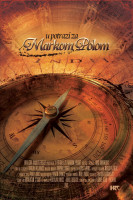U potrazi za Markom Polom Filming Locations

Where was U potrazi za Markom Polom filmed? U potrazi za Markom Polom was filmed in 10 locations across Croatia, Israel, Turkey, Iran, Tajikistan, Kyrgyzstan, Sri Lanka, Italy, China and India in the following places:
U potrazi za Markom Polom Filming Locations
Tajikistan is a country in Central Asia surrounded by Afghanistan, China, Kyrgyzstan and Uzbekistan. It’s known for rugged mountains, popular for hiking and climbing. The Fann Mountains, near the national capital Dushanbe, have snow-capped peaks that rise over 5,000 meters. The range encompasses the Iskanderkulsky Nature Refuge, a notable bird habitat named for Iskanderkul, a turquoise lake formed by glaciers.
Kyrgyzstan, officially the Kyrgyz Republic, is a landlocked country in Central Asia, lying in the Tian Shan and Pamir mountain ranges. Bishkek is the capital and largest city of the country.
Venice, the capital of northern Italy’s Veneto region, is built on more than 100 small islands in a lagoon in the Adriatic Sea. It has no roads, just canals – including the Grand Canal thoroughfare – lined with Renaissance and Gothic palaces. The central square, Piazza San Marco, contains St. Mark’s Basilica, which is tiled with Byzantine mosaics, and the Campanile bell tower offering views of the city’s red roofs.
U potrazi za Markom Polom (2013)
By filming on the actual locations traversed by Marco Polo, the series brings to life the authenticity of the local peoples from the standpoints of ethnology, historiography, culture and economics. We follow the exact route depicted in his book, Il million, documenting the peoples, customs and cultures along the way to bring into sharp relief the cultural differences within the Asian mainland. Viewers are introduced to their development, becoming familiar with three completely different and, to us, relatively unknown spheres of civilisation and religion - Arabic Islam, Indian Hinduism and Oriental Buddhism. The host takes us through regions and cultures that may seem exotic - and, at times, dreamlike - in our search for the evidence of Marco Polo's passage. Interviews with common folk bring to light amazing facts and tales of unfamiliar customs, beliefs, crafts, attitudes and value systems that have developed in Asia over the millenia. The series' depiction of these faraway lands is based on contrast. Magnificent edifices like temples or palaces are juxtaposed with the details from a masterfully crafted vase. The war tactics of the Mongolian army, the greatest military force of its time, are contrasted with the life of today's Mongols in their quaint yurts. The closed Burma (Myanmar) is compared with the opening of China. Each episode forms a whole connected by the thread of Marco Polo, with the entire miniseries linking not only Polo's travels, but the world's largest circles of civilisation (European, Arabic, Indian and Oriental). Finally, the series explores the sensations of wonder and magic, which have changed little in the seven centuries since Marco Polo's time - which might be stronger than ever, especially for us Europeans.

